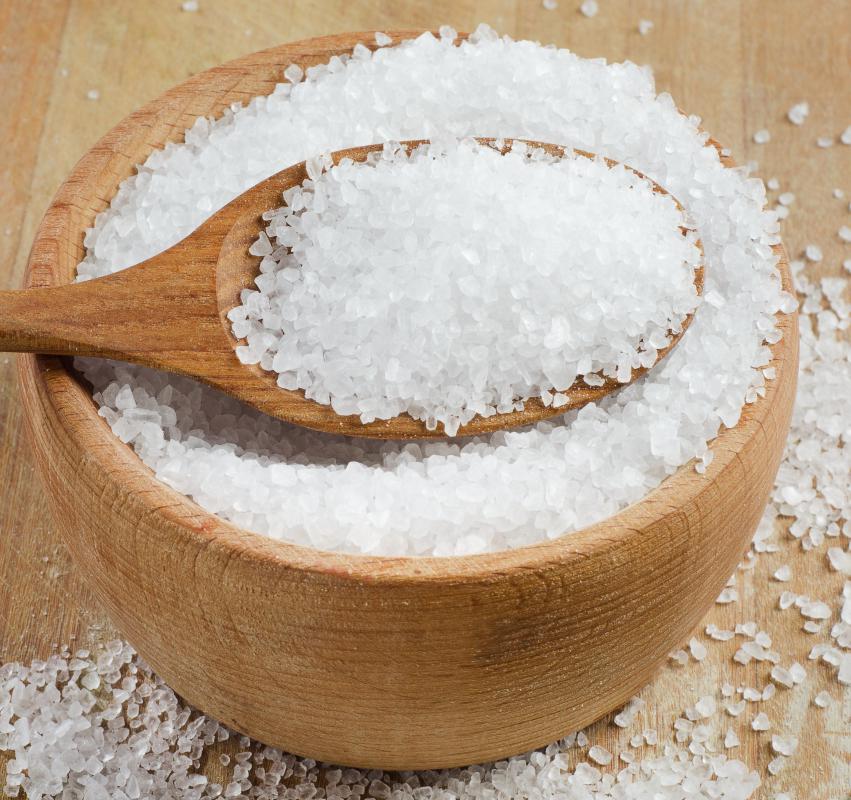At WiseGEEK, we're committed to delivering accurate, trustworthy information. Our expert-authored content is rigorously fact-checked and sourced from credible authorities. Discover how we uphold the highest standards in providing you with reliable knowledge.
What Are the Different Types of Dyshidrotic Eczema Treatment?
The types of dyshidrotic eczema treatment include creams and ointments, botulinum toxin injections, and phototherapy. Natural remedies like salt soaks are also sometimes used. The effectiveness of a particular treatment depends on the severity of symptoms and the individual patient. In addition to medical treatment, a patient can consider self-care therapies such as moisturizing lotions and avoiding soaps and cleansers with potentially irritating perfumes.
The mainstays of dyshidrotic eczema treatment are corticosteroid creams and ointments. These are typically high-potency topical treatments that improve the appearance of blisters and make them disappear faster. This remedy can also treat the skin fissures and cracks that appear once blisters have dried up. A wet or cold compress can increase the effectiveness of this dyshidrotic eczema treatment as well as relieve any itching.

For most patients, the itching that typically accompanies the blisters is a troubling symptom. Patients must try to avoid scratching. Keeping the nails short and clean can help minimize the risk of a secondary infection. If the itching is severe, a doctor can prescribe antihistamines like loratadine or diphenhydramine.
When first-line dyshidrotic eczema treatments are not effective, a doctor may recommend an immune-suppressing ointment or phototherapy. Common ointments include pimecrolimus and tacrolimus. The risk of skin infections increases with their use because they work by suppressing the immune system.

Phototherapy is an ultraviolet light therapy known as psoralen plus ultraviolet A (PUVA) that is believed to affect the immune system. This dyshidrotic eczema treatment is a combination of drugs that make skin receptive to the effects of ultraviolet light and exposure to it. As there are several side effects such as headache and nausea associated with PUVA, this treatment is typically reserved for patients who have not responded to corticosteroid creams and ointments.

Botulinum toxin injections are a less common treatment option and are not endorsed by all medical professionals. When they are recommended, botulinum toxin A intradermal injections are given over several weeks as an adjuvant to corticosteroid creams and ointments or alone. Some preliminary studies indicate that these injections can help reduce the amount and severity of inflammation and blisters.

A popular home remedy for dyshidrotic eczema is a salt or vinegar soak. Symptoms are often relieved by soaking the affected skin in warm water mixed with a half cup of Epsom or sea salt or one part organic vinegar to two parts water. The soak should last no more than 10 minutes.
When enduring an outbreak of dyshidrotic eczema, the patient should avoid scratching the affected area and limit exposure to very hot water that can dry the skin. Dryness can be prevented by moisturizing with lotion or hand cream after washing. Any lotions or soaps should be fragrance-free to avoid further irritating the skin.

Dyshidrotic eczema, or dyshidrosis, is a skin condition characterized by the occurrence of small vesicles or fluid-filled blisters on the palms of the hands and soles of the feet. The blisters can last up to three weeks and are often very itchy but resolve on their own for most patients. The exact cause is unknown, but several different factors, such as emotional stress, allergies, or exposure to cobalt or nickel, are believed to trigger symptoms. A medical professional can often diagnose dyshidrotic eczema by simply examining a patient’s skin.
AS FEATURED ON:
AS FEATURED ON:
















Discussion Comments
@rundocuri- There are ways to help alleviate some of the side effects of using cortisone cream, such as irritated skin, whitening of the skin tone, and thinning of the upper layer of skin.
If your dyshidrotic eczema is not too severe, try using the cream every other day, or every three days or so. This will allow it to soothe the symptoms of eczema without severe side effects.
Using a sunscreen is also a good idea that will soothe your skin while you are using cortisone cream. It will also help you to prevent a sunburn, which is common in eczema sufferers.
Finally, using a moisturizing lotion along with cortisone cream will help to keep your skin soft and smooth, eliminating side effect symptoms such as flaky, itchy skin.
I know that cortisone cream is a good treatment for mild dyshidrotic eczema, but it does have some side effects. What are the best ways to curb them so they do not become too bothersome?
Post your comments